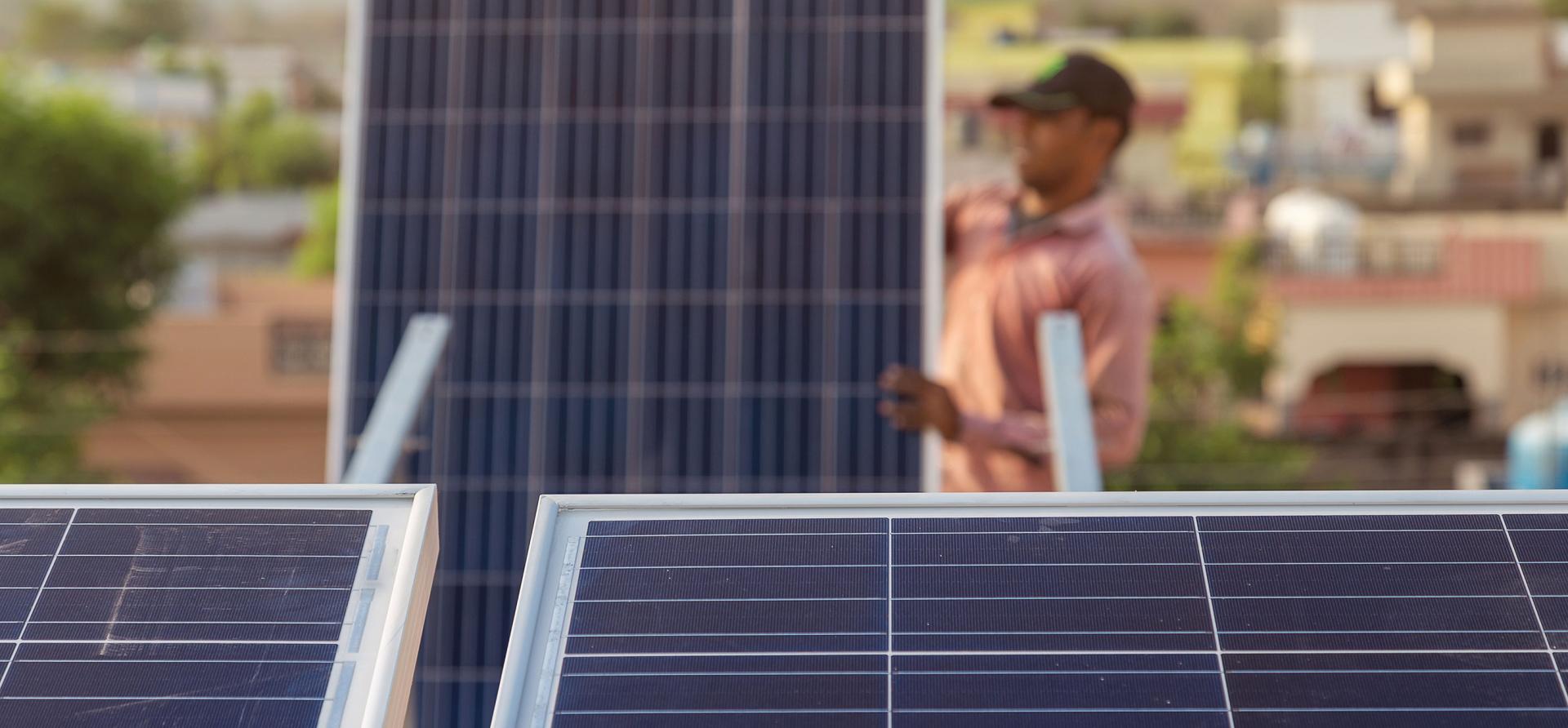IEEFA Update: Solar installation surge puts India on track to cap coal-fired power as early as 2024

If India keeps installing solar capacity at the rate it’s achieved for the last three months, coal-fired power could peak in the 2023-24 financial year, and increased solar generation alone could meet the country’s growing electricity requirements in subsequent years.
Increased solar generation alone could meet India’s growing electricity requirements
India’s electricity demand has surged and slumped in recent months as the economy revives in fits and starts, but the fact is that coal-fired power is increasingly sensitive to the performance of renewable energy.
Coal has effectively become India’s swing producer of electricity, rising to new peaks in periods when demand is high and renewable power low, but slumping deeply when demand falls and renewable energy’s contribution rises.
In recent months thermal generation has swung between a daily low of just over 2.0 terawatt hours (TWh) on August 1 (when renewable energy and hydroelectricity provided 38% of India’s electricity), to as high as 3.2 TWh just over two weeks later when renewable energy and hydro made a smaller though still impressive 25% contribution to the grid.
But while the variable nature of renewable energy is well known and the financial fortunes of coal-fired power are increasingly tied to its generation level, it is a recent change in a different number that may prove decisive in determining how soon coal’s contribution to India’s electricity reaches its peak. That number is the rate at which the country is installing new solar capacity.
Calendar year 2020’s pandemic conditions saw new solar installations fall to an average of just 411 megawatts (MW) per month, compared to 665MW per month as the average since January 2017. But since May this year there has been a very strong rebound. A total of 1,248MW of solar capacity was added in June, followed by an additional 1,605MW in July, rising again to 1,672MW in August.
This average of 1,508MW per month for the last quarter does more than simply double the long-term installation rate – it shows just how close India could be to capping thermal generation. If this installation rate continued, solar capacity would reach 109 gigawatts (GW) by March 2024, generating some 87 TWh of additional power annually, enough to meet all of India’s electricity generation increase, based on the latter’s 5.7% annual growth rate over the decade to 2019.
Daily peak demand has been rising faster than daily energy
Some other adjustments would be needed if coal-fired power were to peak and subsequently decline. Daily peak demand has been rising faster than daily energy, meaning that thermal plants would increasingly have to be deployed to meet the daily peak, as would hydroelectric generators, without increasing their overall output. Additional pumped storage and India’s first set of grid-scale batteries would also support the peak, along with the development of a time-of-day pricing structure to incentivise demand response management by industry and consumers.
Whether the actual installation rate matches, falls short of, or exceeds this rate will come down to the determination of the Indian government. The current rate would comfortably meet the 60GW ground-mounted component of the 2022 125GW renewable target, but not quite match the average rate needed to hit the 280GW solar component of the 450GW 2030 goal.
What the last few months clearly demonstrate, however, is India’s ability to now accelerate the installation of grid-scale solar fast enough to cap coal-fired power before the middle of the decade and potentially to see a gradual coal generation decline from that point on.
The recent lift in rooftop solar installs, along with increased development of wind and rounding out those nearly completed hydro power projects to which India is committed could make our timeline here conservative indeed!
By Tim Buckley, Director Energy Finance Studies Australasia at IEEFA and Dr Charles Worringham, researcher and contributor at IEEFA
This commentary first appeared in The Economic Times
Related articles:
- IEEFA India: Financing options must be scaled up to boost adoption of rooftop solar
- IEEFA: Financing Trends in the Commercial and Industrial (C&I) Rooftop Solar Market in India
- IEEFA: India’s new gas infrastructure investment must be part of a balancing act
- IEEFA India: Why prices skyrocketed at the power exchange
- IEEFA India: Proposed power market reforms could reduce renewable energy costs further
















